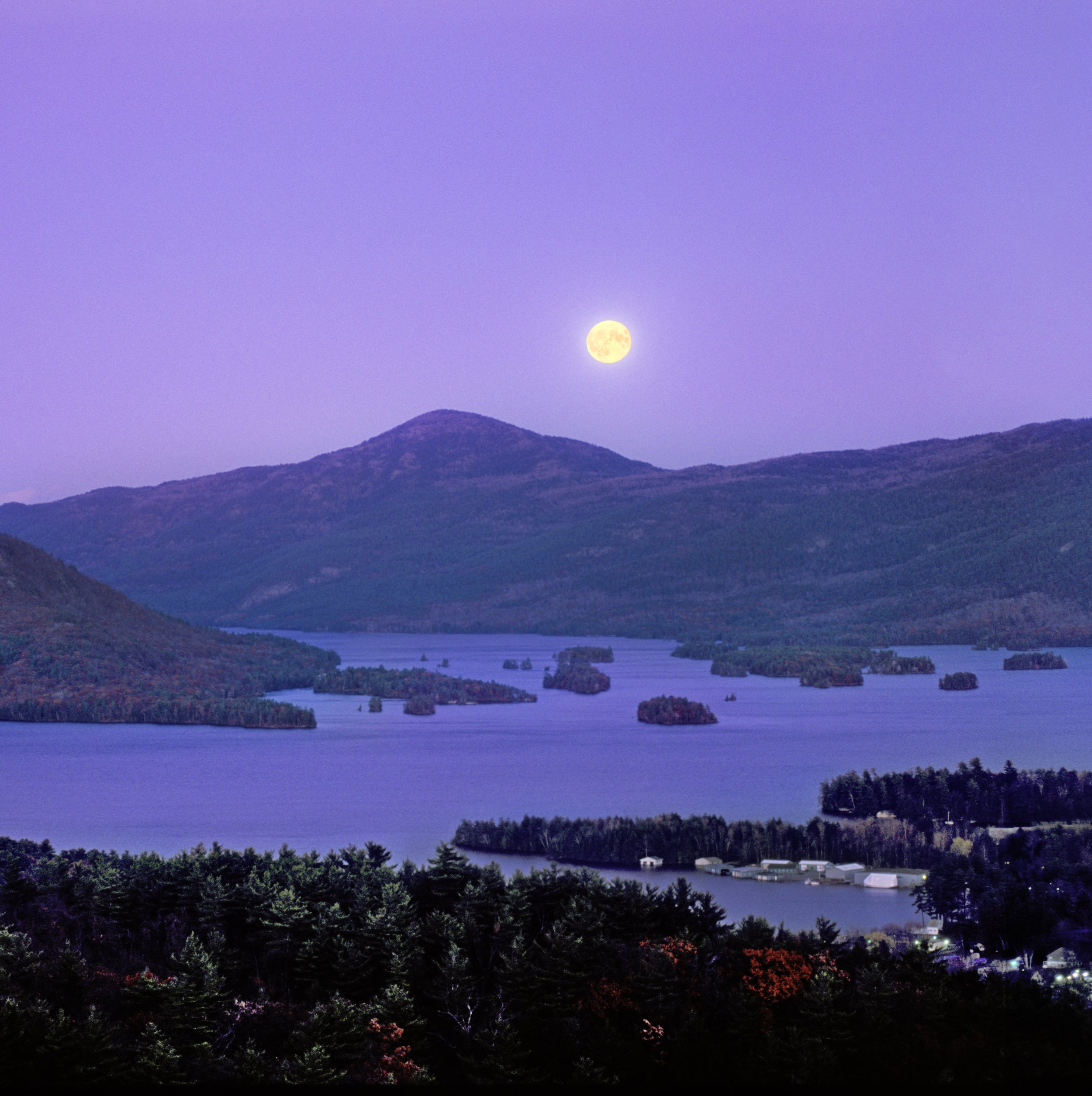
the Lake
The Lake is a unique combination of visual and functional beauty deservedly known as the Queen of American Lakes. Relatively large for a body of fresh water that is not a “Great” lake and enclosed by picturesque mountains, it is spring-fed, clear and inviting. As a low altitude lake in the foothills of the Adirondacks (300 hundred feet above sea level), its waters are a hospitable 70+ degrees during the summer months. Thomas Jefferson, a 1791 visitor with James Madison, wrote his daughter that it was the most beautiful body of water he had ever seen. The pristine natural qualities of the Lake are protected by “Forever Wild” provisions in the New York State Constitution, various statutes, and the regulatory authority of the Adirondack Park Commission. Long stretches of shoreline remain in their natural state, are not accessible by road or highway, and cannot be developed.
Of the over 100 islands large and small, all but a handful are state-owned and dotted with public campsites. The few private islands generally have older modest homes well-spaced along their shorelines. Many of the islands resemble one another. There are some notable exceptions: Dome Island which sits untouched in open water like a rounded mountain top, Green Island, connected to the mainland at Bolton Landing by a short bridge, home to the gracious Sagamore Hotel, Convention Center and condo complex, Glen Island in the Narrows, mid-Lake, with its Ranger Station, convenience store and 12 docks, ‘split’ Hecker Island just past the Mother Bunch, summer refuge of the Paulist Fathers, and artificially connected Three Brothers Island near Bolton on which the fictional Three Indians Island in the novel is modeled.
Humans are newcomers; considerably before they entered its history, the Lake had geological beginnings long centuries ago. In the warming light of early suns, a receding glacier melted into a ready basin of natural rock and earth. The indigenous people, first to glide across the clear waters in silent craft, believed the cradling mountains were molded by the nimble fingers of an artful deity, reasonable thinking then to explain the beauty around them.
While less harmonious craft now ply its waters, the many moods and faces of the Lake remain unchanged. Now, as then, a catch-basin for myriad feeder springs and streams, the Lake may be colored blue by open skies, or pock-marked gray by rain, the glaze of calm, or the sturdy chop of driving winds, taking annual respite from more playful moods beneath the hardened cold of winter. The waters of the Lake still trickle north into Lake Champlain at Ticonderoga. The Lake does not diminish; the rains and springs provide constant replenishment down the valleys of the sustaining mountains, green in summer, gray and white in a reasonable run of winter.
The Lake, with both visible and audible lines, is a character in the novel.

